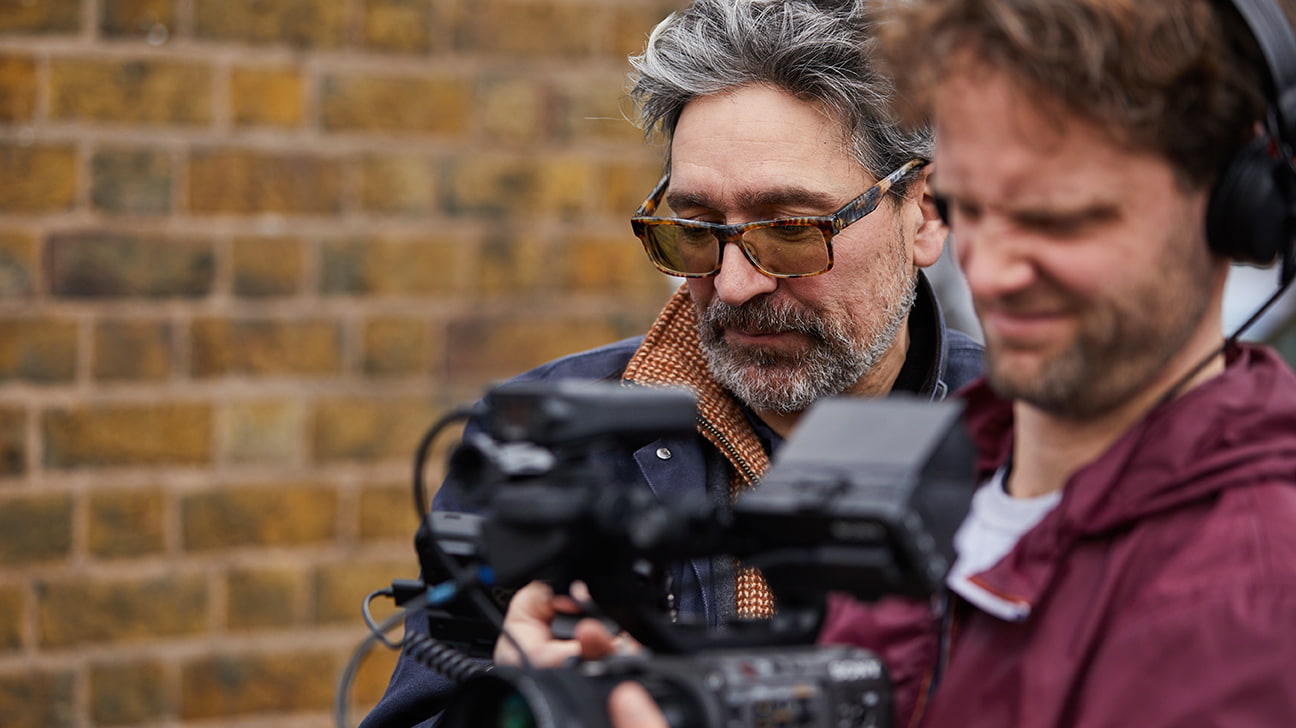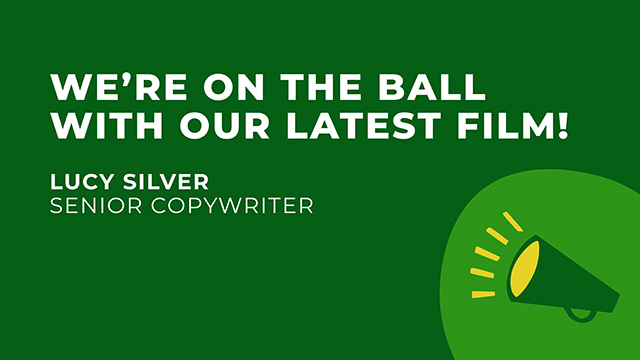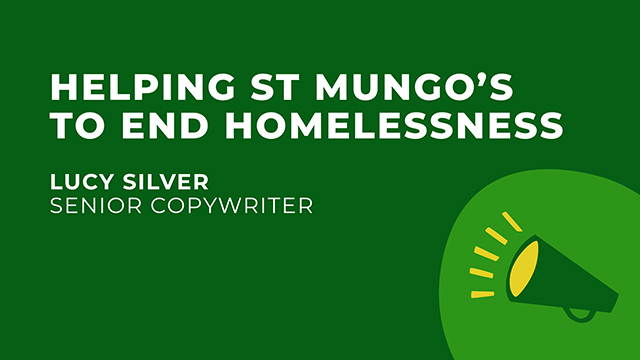DRTV: Creating award-worthy ads that work

DRTV is a powerful tool for charity teams looking to engage, move, and inspire their audience. But with attention spans waning and competition growing, what can charities do to create DRTV that works?
On the day of the 2024 Charity Film Awards where five of Open’s films are shortlisted across various categories, we interviewed Creative Director, Jamie Tierney, to uncover how to create effective charity DRTV.
Hi Jamie, congratulations to the team on your five shortlisted films and good luck for a win for a second year running. What are the key steps involved in creating an award-winning charity film?
First, it starts with confidence and trust between the agency and charity.
You’ll be on a journey together over the coming months so it’s important to get this right from day one by developing a clear and concise brief to set you off in the right direction – and it’s our responsibility to make sure the brief has everything we need.
Does it have a clear and compelling need, a tangible solution, and a strong call to action? Sometimes charities can overcomplicate things by chucking lots of stuff in there but it’s important to keep it simple and to the point.
Next, and probably most importantly, it’s finding the story – and the right voice to tell it. Ideally it’s someone with a unique and personal connection to the story and the cause.
Having found our story we then develop ideas or treatments. At this stage it’s just words and pictures on a page... so you need to be able to help people understand your vision, get them excited and take them with you, we need to sell it with passion and purpose.
Once a route has been chosen we then bring together the right production team to help deliver the film.
It’s important to stay focussed and across the detail right until the very end of the production process; the final 10% contributes a lot to the finished film.
Every aspect of your film is doing something to deliver a response so think ‘results, results, results’ at every stage.
We cover a lot of this, and more, in my ‘How to create effective DRTV’ training video on our Channel.
What distinguishes a successful charity campaign film from an ordinary one?
A story told from the heart, about people and real lives, not organisations – because people give to people and we crave, and are moved by, connection.
Avoid charity sector cliches because your audience will switch off. Find ways to grab your audience’s interest – like using editing and sound to view the story through someone’s eyes. There’s a bit of compassion fatigue in the sector too, so try to innovate with the story you’re telling and the emotion it carries.
The best charity films offer a bit of intrigue or a surprise, maybe the ending isn’t what you’d expect it to be, making you think differently about a cause or an organisation.
One of my Creative Directors used to say, “If you want to catch a mouse you need to leave room for him in the trap!” I think the best ads let the audience do a bit of work – but not too much.
How do you identify and understand the target audience for a charity campaign film, and how does this influence the creative decisions you make?
Identifying the audience is generally worked out in the planning stages. We’ll be given a profile of the target person or demographic. It’s good to think of these as real people, your nan or aunt or uncle… otherwise you can get lost in a world of statistics and graphs which clients and planners love – but can be quite dehumanising.
So audience insights are key here. You’re looking for a hook and way in, maybe they’re a parent or grandparent. What are their interests or hobbies? Their life experiences? What do they read? Look for anything that will help you find a tone of voice and approach that they will relate to.
“As we like to say at Open, ‘there’s a film in every story and for every budget,’ you just need to find it.”
Can you tell us about a charity campaign film that you’ve worked on that had a significant impact on you?
The one that comes straight to mind is our Covid rapid response DRTV ad for NSPCC.
In the midst of the pandemic we approached this ad in an extremely direct way. A Childline counsellor explains how she’d just finished her shift where many children were trapped in lockdown with their abusers. We shifted attention onto children at a time when they weren’t being talked or thought about at all.
The film really stands out for me because we used real volunteers who talked with knowledge and passion, so the story was as authentic as it could possibly be.
It tapped into a moment and feeling that everyone could relate to, being stuck at home in the middle of a crisis – and by joining that moment with the story it highlighted a strong need from young children that some may not have considered before.
It was the right message at the right time with a strong story and even stronger call to action.
How do you balance the need to convey a powerful message like this with the risk of potentially alienating or overwhelming the audience?
I always think the trick with this is that ‘less is always more’.
For example, leaving the horror of child abuse in the audience’s imagination is more effective than if you try to physically represent it. For another project with NSPCC, we had an incredible response to an ad that recreated quotes from children who had called Childline, talking about their experiences to a counsellor. The quotes were absolutely heart-breaking, and with the sensitive direction of young actors voicing the words, it was extremely compelling. You don’t need much more than that.
The other thing to mention here is that for TV, Clearcast need to approve the ad, so it can’t be too distressing if children are likely to see it. As most of our ads will run in daytime slots it’s imperative that we get their approval.
The visual and auditory parts of a film can greatly enhance its impact. How do you approach cinematography, sound design, and music selection to create a powerful emotional experience for viewers?
Every one of these elements are meticulously thought through by our team.
For cinematography we’ll have a good idea for the tone of the piece in our treatment phase. We’ll have references in mood boards from films, photography or other ads we like, and thoughts about the effect we want to achieve. Once a Director comes on board, they’ll build on this with their own ideas and of course work with the Director of Photography to achieve the result.
Sound design is a vital phase and one which is easily overlooked. The layering up of ambient sounds builds the atmosphere and soundscape of a scene and brings small details to life, creating a fuller, more authentic quality across the piece. We’ve worked with sound designers who have even added the hum of a fridge into the background of a kitchen scene. You’ll be surprised how these tiny details can make a big difference to the overall impact of your film.
And with music we’ll have a good idea of the tone we want from concept stage, maybe even a placeholder track in mind. Mostly, budget restricts us to library, royalty free tracks, but occasionally we’ll get a composer to create a bespoke track for the ad if budget and time allows.
If there is a famous track that we know will work perfectly we’ll try to contact the publishers and see if they are up for giving us the track “gratis” or for a reduced fee... we’ve used tracks from the Chemical Brothers, Fat Boy Slim, and even Queen! But it can be a time-consuming process so not one we ever bank on.
In your experience, how do you avoid some of the common pitfalls that charities experience when creating charity film?
Know what you want to achieve. Find the single most compelling ask and get your organisation behind this from the outset.
Get the right people to sign off on the brief and at key stages in the process. You don’t want a client questioning the storyboard on the day of the shoot, or CEO sign off the day before the ad goes live.
Remember it’s a collaborative process, there are many moving parts and it can be confusing. Your agency is there to steer you through and guide you on the journey.
Finally, what advice would you give to aspiring filmmakers at charities who want to use their skills to make a positive difference in the world through charity campaigns?
I’d start by finding the stories and people that best represent the cause – it could be someone supported by the service, a volunteer or someone working on the front line. If the charity is part of the local community, go and meet the people on the ground – that’s where you’ll find the human interest and the success stories. Go to where the organisation is making a real difference to people’s lives.
You could meet over Zoom for a quick initial chat then after your research calls work out the thread of the story you want to tell. Is there a lead character? Are there supporting ones? Where will you find them?
Adopting a documentary filmmaker’s observational approach is a good idea. Take your camera and microphone and get out there – ask questions and get people talking. You might think it’s just an ordinary day, but the stories you’ll be telling will get people to notice the great work the charity does.
As we like to say at Open, “there’s a film in every story and for every budget” you just need to find it.
If you have an idea for your cause and just want some advice on how to bring it to life, give us a call… we love collaborating on ideas and finding ways to make films happen.
Following 2023’s win with the Barnardo’s brand-response film, Change a childhood, change a life, Open and their charity friends are finalists with five films in the 2024 Charity Film Awards.
You can watch the films here:
Childline is a lifeline | NSPCC
On the ball | Action attainment
The cost of loving crisis | PDSA
Build it. Beat it. | Great Ormond Street Hospital Charity
Be there | International Committee of the Red Cross
We’re passionate about bringing the right people together to tell a story and we’d love to help you tell yours. Get in touch with our team today if you’d like to create award-winning charity film that works.

